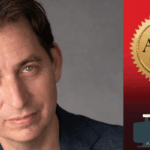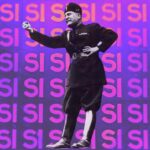The Federation of Rhodesia and Nyasaland had hoped that its investigations into the crash of the would draw precisely the reaction Virving had received from the Swedish government: Pilot error. Nothing to see here.
It was an eminently plausible conclusion. Flying in Africa was a dangerous business in 1961. Planes went down all the time. When they did, their loss was often cloaked in the kind of mystery inevitable on a huge, sparsely populated landmass with inconsistent aviation infrastructure.
But the report had not examined any of the groups in and around the Congo with an interest in Hammarskjöld’s movements on the night of the crash. The white supremacist Katangese mercenaries. The French Special Forces soldiers who led them. The spies from Britain, America, Russia, and elsewhere. The companies Union Minière and Tanganyika Concessions.
It was fertile territory. And in the weeks and months after the Federation’s report was released, fragments of both real evidence and outlandish notions emerged from it.
In January 1962, a Danish journalist floated the “seventeenth man” theory. His story posited that a hijacker had crept aboard the Albertina, and that the crash happened when he had tried to wrestle control of the plane from its pilots. Some Rhodesians believed that Hammarskjöld had been working covertly on behalf of the Swedish and American governments to secure mining interests in Katanga, and they had killed him to keep the secret.
Ivan Smith, meanwhile, had uncovered his own theory. He had sparked up a friendship—one that would last a lifetime—with Conor Cruise O’Brien, the UN and Hammarskjöld’s former representative in Katanga. And he began to visit the Elephant and Castle bar in Ndola, the informal club for the leadership of the Katangese military. It was owned by the former mayor of Ndola and his brother, the official executioner for the area. (His party trick was sizing people up for hanging.) There he got to know the flamboyant, deadly soldiers, pilots, and miscellaneous eccentrics who had been fighting the UN by any means they could think of, as long as the paychecks kept arriving from Tshombe.
in the weeks and months after the Federation’s report was released, fragments of both real evidence and outlandish notions emerged from it.Among them was an all-purpose fixer and sometime journalist named Roger Asonong. Asonong told him that a group of far-right European soldiers, led by a white mercenary named Van Rooy, had been involved in Ivan Smith’s kidnapping. It heightened his sense that the same group, or a similarly motivated one, had also targeted Hammarskjöld.
Another source had told him that, during September 1961, those same mercenaries had maintained a helicopter connection between their Elisabethville operations and Ndola. It suggested, circumstantially, that the soldiers had at least been focused on the meeting between Hammarskjöld and Tshombe. And it chimed with information Ivan Smith had received from Hammarskjöld’s nephew, Knut.
He told Ivan Smith that Colonel Faulques, the brutal and ascetic French commando who had essentially run the Katangese guerrilla operation, had been based in Ndola himself that month, with three other senior operatives.
The Federation had simply never looked into such leads. Its investigators had barely gone beyond the wreckage. In fact, its government had quietly tried to stop the UN mounting its own investigation to avoid further scrutiny. But its pressure and persuasion had failed.
A specialist UN team re-examined the site of the crash and sifted the wreckage once more. It interviewed nearly a hundred witnesses. They included many of those who had seen the plane in its last moments, air traffic control crew and airport staff, the police officers who had first reached the scene, and the medical personnel who had cared for Harold Julien. A quarter of them had not given evidence before. And in April 1962, it released its report. It was a moment of hope for Ivan Smith, Virving, and others who did not believe the official account.
The UN investigators dismissed the “seventeenth man” theory. Nobody had seen or heard anything to indicate that a hijacker might have sneaked on board the plane. Besides, no extra body had been found in the wreckage.
The report did note that a saboteur would theoretically have been able to access the Albertina’s hydraulic compartment, heating system, or undercarriage without detection as it waited unattended on the tarmac in Leopoldville before embarking.
But there was no evidence that the plane had been damaged deliberately. It was flying perfectly before the crash. And anyone trying to plant a bomb, the UN decided, would have needed to know that the Albertina was flying a longer route—five hours, not four—in order to time a detonation.
The only planted explosive that might have worked would be one specially—and expensively—designed to detonate by connection with the undercarriage, flaps, lights, or anything else that was activated at landing. There had been no evidence of an explosion, the UN report reiterated. But several witnesses had seen a flash or flames. The UN had re-created the crash, as seen from the ground, by placing each of the key witnesses in their positions that night and flying test planes along the route of the Albertina. That exercise was calculated to help consider the idea that another plane had shot, or forced, the Albertina down.
No radar was operating around Ndola that night, so the possibility of an unannounced plane in the sky could not be ruled out. And the UN investigation had found two new witnesses who had seen another aircraft.
But the UN, like the Rhodesian investigators, did not trust those witnesses. They must have been mistaken, the report said. Perhaps they had compressed in their memories events that happened over a longer time period. Some of them expressed anti- federation feeling, and so their statements might have been colored by politics, too. Virving’s theory, the investigators felt, was simply too complex. The events he documented were “susceptible of other and more logical explanations.”
The most likely cause, the UN report concluded, lay in the landing charts given to the pilots. These were usually marked with terrain contours and spot heights where significant, so pilots could consider the topography before landing. But on the Ndola chart, the report found, neither contours nor elevations had been marked at the point the Albertina had crashed.
The British Foreign Office, aligned with the Rhodesian Federation, had pressured the UN to attribute the crash to pilot error. But, instead, it returned an open verdict. That meant that, should new evidence emerge, it was willing to re-assess.
The first book on the crash, which came out that August, reached a similar conclusion.
The Mysterious Death of Dag Hammarskjöld, by a veteran diplomatic correspondent, Arthur Gavshon, pointed out that the inqui- ries conducted so far had utterly failed to take the broader context of the conflict in Katanga into account. The book cemented the crash, one reviewer noted, in the “realm of myth and mystery.”
One of the UN’s investigators, Hugo Blandori, a dashing former FBI agent who smoked a spectacular curved pipe, had put together his own narrower but far more detailed report. Eleven typewritten pages, detailing the new facts he had gathered. One section stands out. It centers on a visit to one of Harold Julien’s doctors, Mark Lowenthal, at his home.
Lowenthal had given evidence that Julien had been lucid after the crash. But the doctor’s account had been dismissed by the Rhodesians. Lowenthal was simply not credible, the authors of the Rhodesian report had felt. And so Lowenthal wanted to clarify, to Blandori, two points about the soldier’s last days.
As soon as Julien had arrived at the hospital, Lowenthal said, he had personally administered a plasma transfusion into his right arm. Doctor and patient had been very close to each other, a moment of peace in the crash’s aftermath. Julien did not have to strain either to talk or to listen. And so their conversations were quiet, and calm, and not overheard by any of the hospital staff.
The Rhodesians presumed Julien had given his abstract recollections of the crash after being administered pethidine, a power- ful opioid painkiller that acts quickly but can induce delirium. This was not the case, Lowenthal told Blandori. Julien was not administered pethidine until after Lowenthal had given the plasma infusion. His recollections were colored by pain and trauma, but not powerful drugs.
Ivan Smith had used his new connections to secure a tape of Julien’s interview with the Rhodesian police. He felt that Julien could not be dismissed as delirious even after the drug was administered. There was something about the clear and detailed way he gave his name, address, and telephone number that made it seem, to Ivan Smith, as though he was absolutely coherent.
Most gallingly, for Ivan Smith and the others who had known those aboard, the report detailed the missed opportunities to find the Albertina before daybreak. It also found that, contrary to the Rhodesian accounts, Hammarskjöld’s death was probably not mercifully instantaneous. He had grasped at the grasses and plants growing underneath him. Ivan Smith knew, at last, that his friend had died alone in the forest between midnight and 3 p.m. the next day.
There were, when all the confusion and misdirection had been pushed aside, four fundamental possibilities left. The first, pushed hard by the Rhodesians, was that the crash of the Albertina had simply been an accident. The second was that something on board the plane—a hijacker, or a bomb—had caused it to crash. The third was that gunfire, or other ground attack, had brought it down. And the fourth was aerial interference; the presence of another plane, perhaps hostile.
Every straight line Ivan Smith had found through the thicket of clues pointed in one direction: the Rhodesian Federation itself. There was, he realized, an essential conflict of interest. The Federation had overseen the inquiries but had also supported the mercenaries and hated Hammarskjöld. It was supported, in turn, by the British, who very much wanted the entire issue to go away.
The Rhodesians simply must have known more than they were saying. And so he began what would become a lifelong relationship with a man who had stood against the UN and Hammarskjöld. Sir Roy Welensky, the prime minister of the Federation of Rhodesia and Nyasaland.
_____________________


















